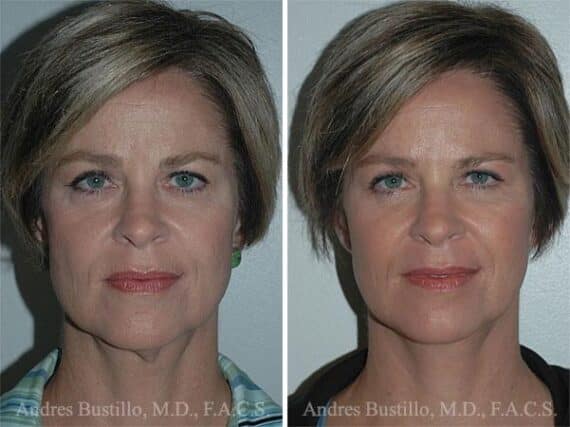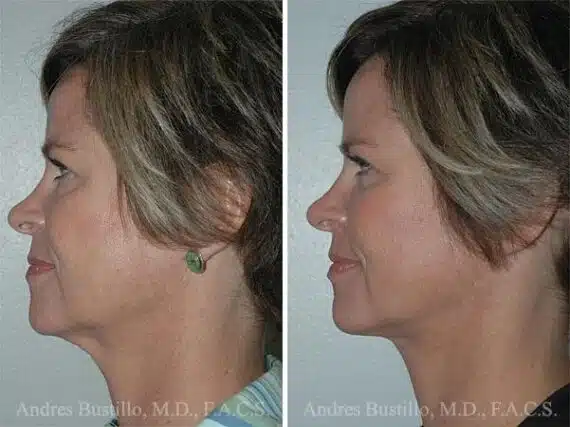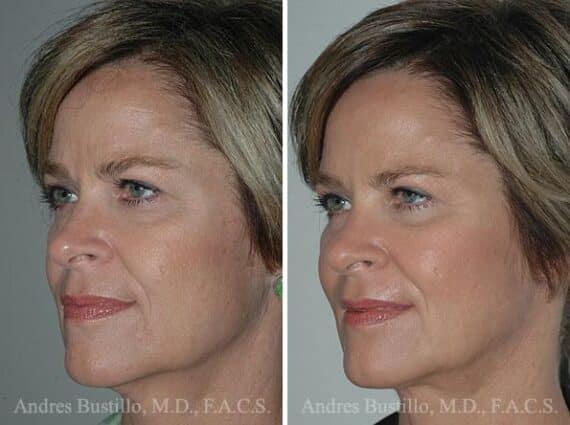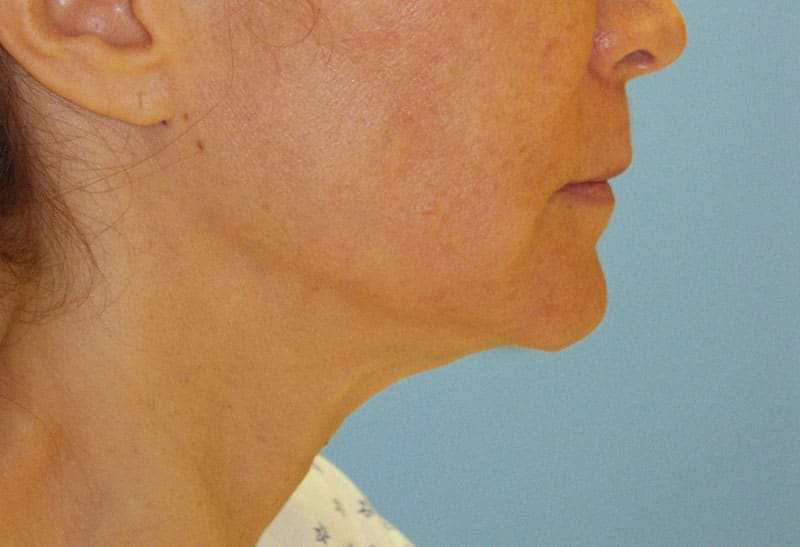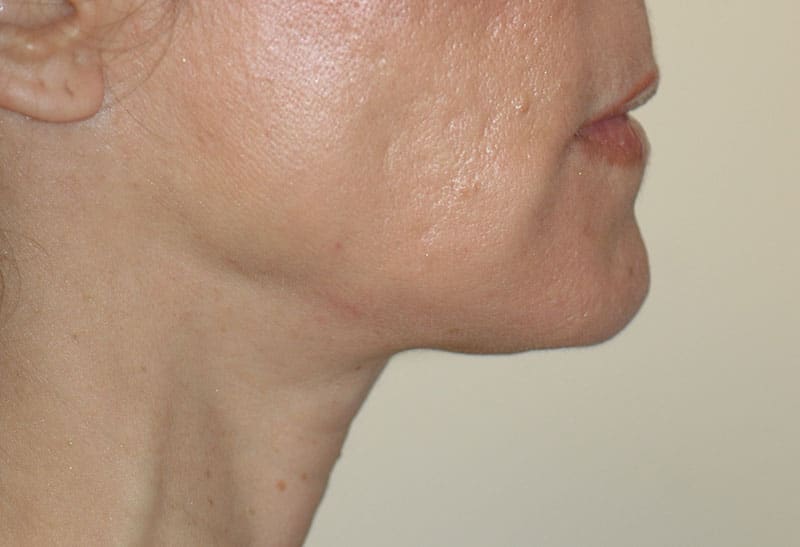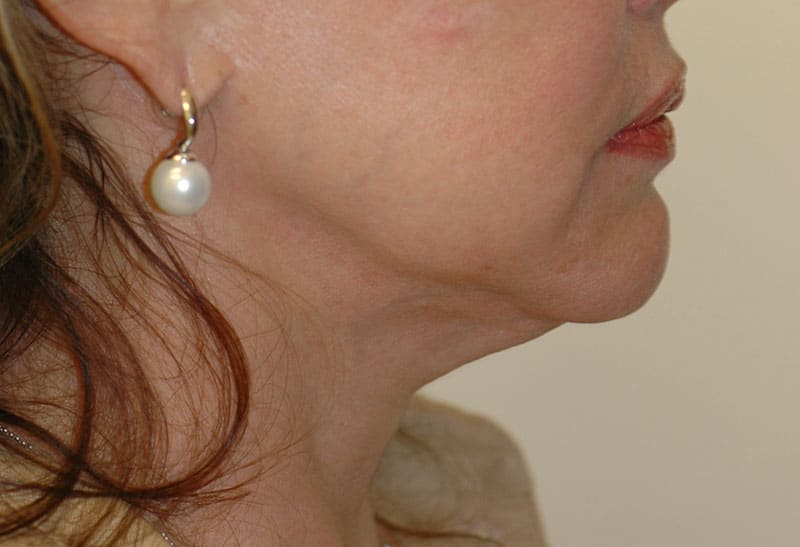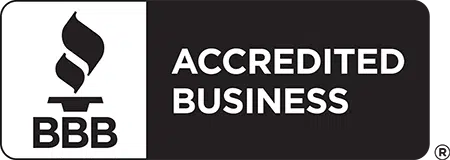Rejuvenate Elegantly with Neck Lift Benefits
A Neck Lift is an effective cosmetic procedure designed to rejuvenate the appearance of the neck and jawline. It addresses the visible signs of aging by tightening loose skin, reducing wrinkles, and enhancing the overall contour of the neck area. Ideal for individuals seeking to restore a more youthful and defined profile, a Neck Lift offers both aesthetic and psychological benefits.

Patient Testimonials: Real Stories, Real Results

What is a Neck Lift Surgery?
A neck lift tightens and lifts sagging skin, reduces wrinkles, removes excess skin, and creates a more youthful neck appearance. It can be done alone or with other facial procedures like a facelift. Small incisions behind the ears and under the chin provide access to the muscles and fat. Dr. Bustillo tightens and reshapes these tissues, then removes any extra fat or skin. The results generally last a long time, though touch-up treatments may be needed.
At What Age Does the Neck Start to Sag?
The age at which the neck begins to sag varies, but it usually happens after 40. Factors like sun exposure, smoking, and genetics can accelerate neck aging.
Neck Lift Before and After Photos
Each patient is unique and individual results may vary*.
Effective Treatments for Neck Aging
Neck lifts reverse visible signs of aging by removing excess fat, tightening underlying muscles, and re-contouring the skin on your neck. The treatment is ideal for anti-aging, but it’s also an excellent option for patients who have lost significant weight and have skin with little elasticity to allow it to retract.
Challenging Areas in Neck Rejuvenation Surgery
Treating the Platysma Muscle
The platysma muscle, which extends from the lower face down to the neck, can sag and separate with age, forming visible “platysmal bands.” A platysmaplasty tightens these muscles through a small incision and pulls from the sides for a more defined neck contour.
Addressing the Submental Area (Under the Chin)
Fat accumulation in the submental area (double chin) can cause an inflated appearance. Fat removal should be done carefully to maintain a natural look while sculpting a smoother neck. Overzealous fat removal can make the neck appear skeletal.
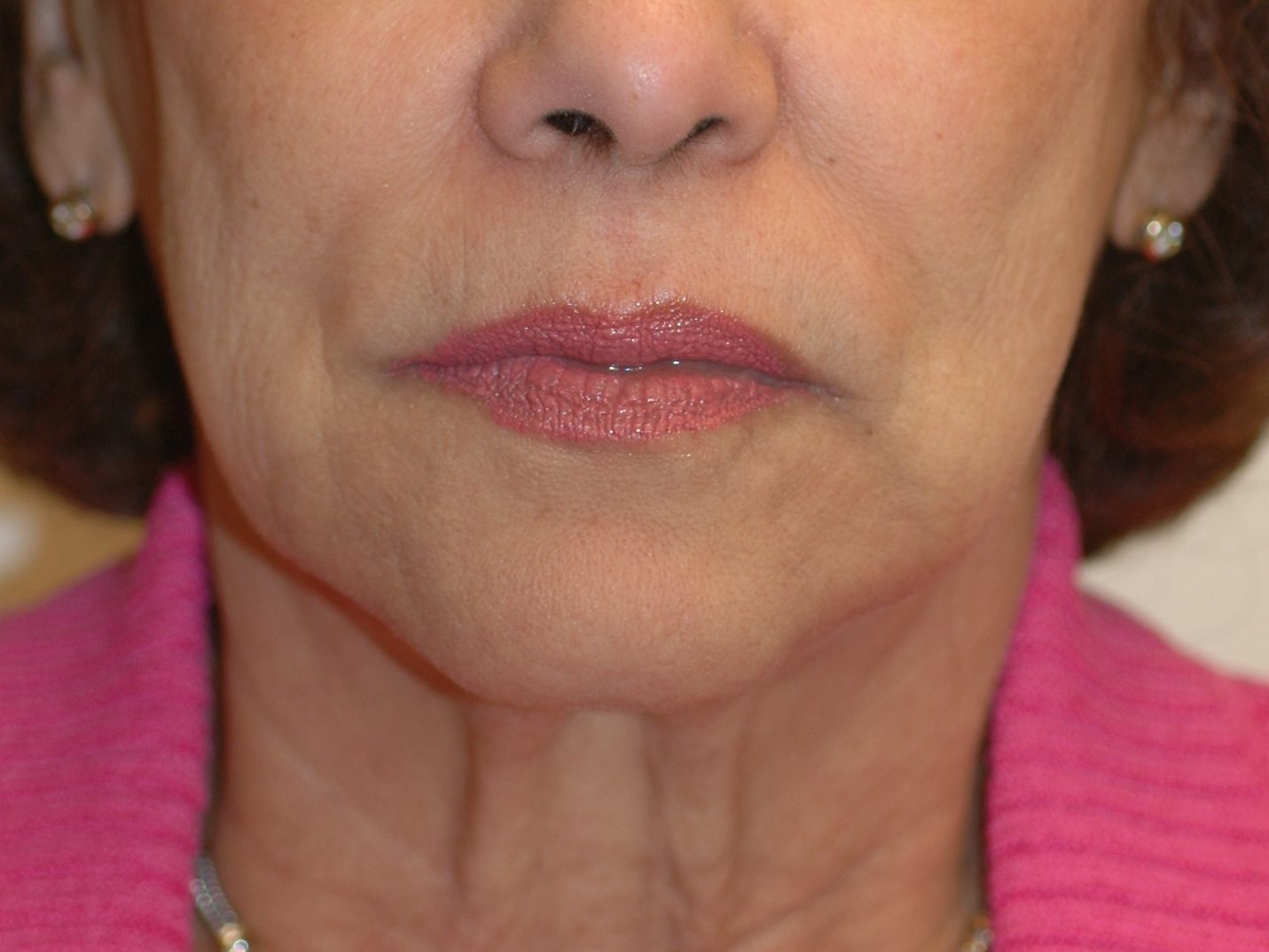
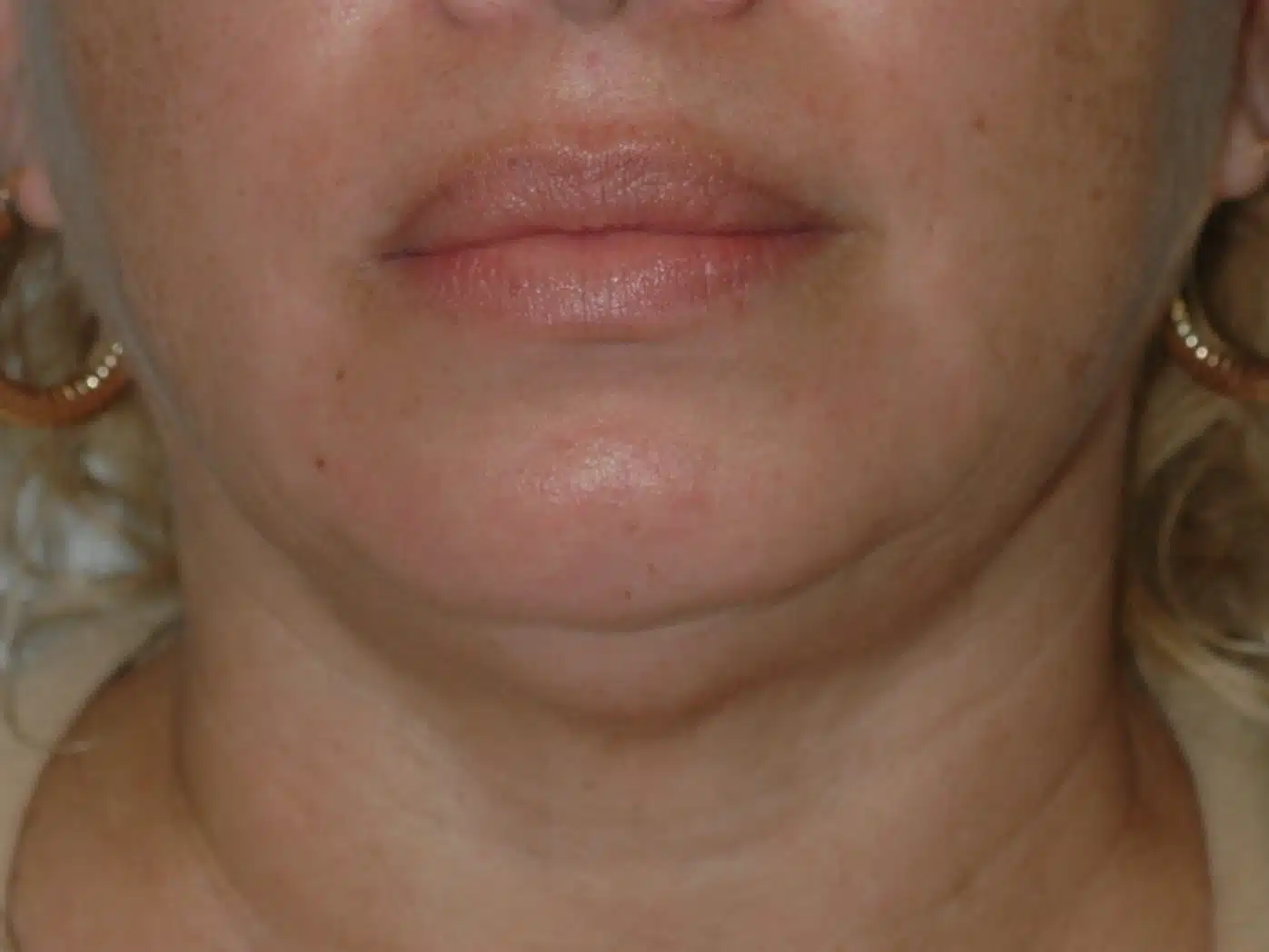
Managing Loose Skin
Loose skin is a common concern as it loses elasticity over time and sags below the chin. While a neck lift tightens muscles and removes excess fat, it may not fully correct severe skin laxity. Patients with significant laxity may benefit more from a facelift, which allows for greater skin removal.
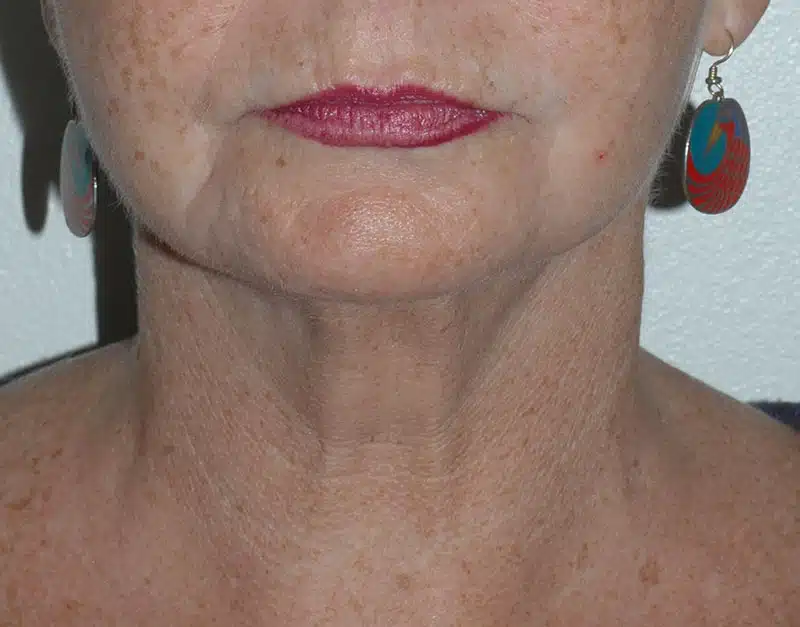
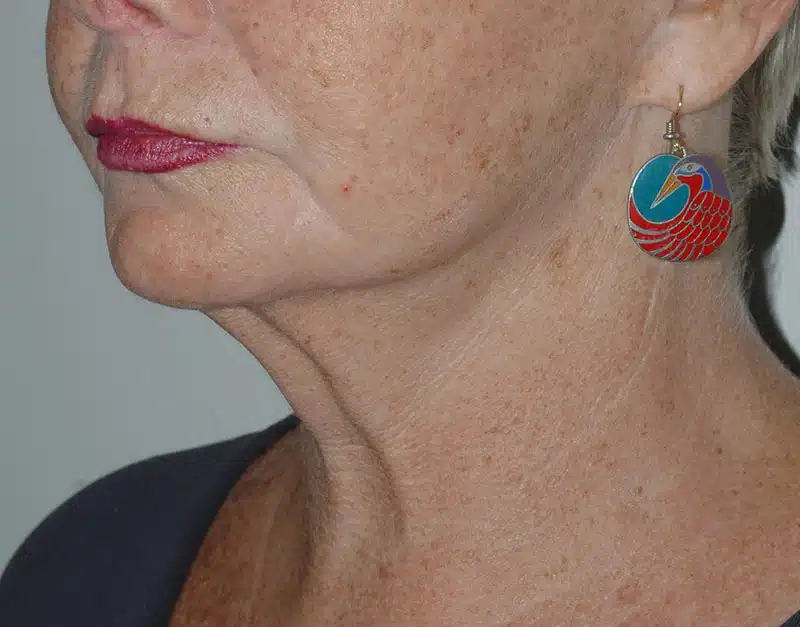
Understanding Skin Quality and Limitations
The neck lift procedure doesn’t directly improve skin quality. Patients with very lax skin may have less-than-ideal results due to the limitations of the surgery. Combining a neck lift with a facelift may address skin laxity better by removing excess skin.
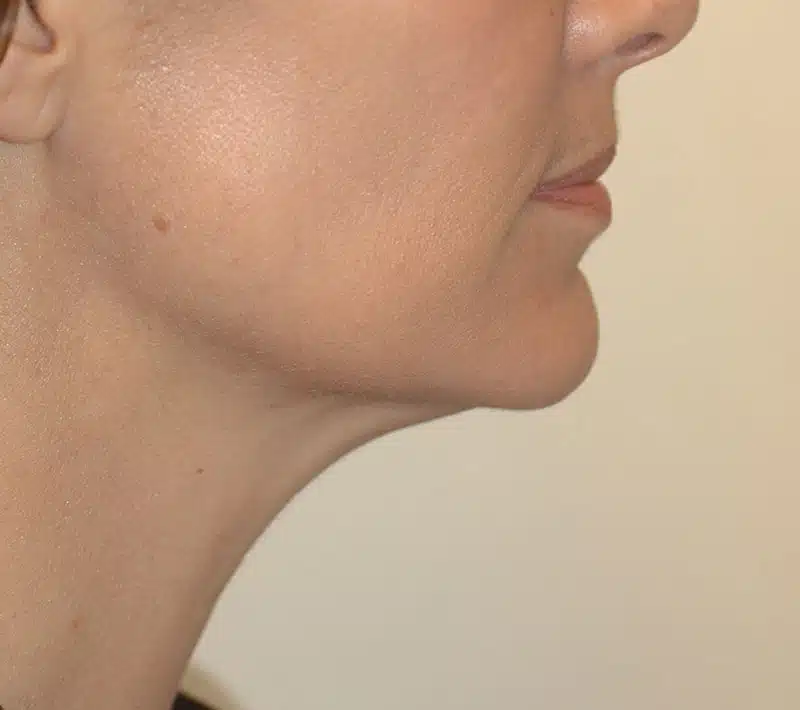
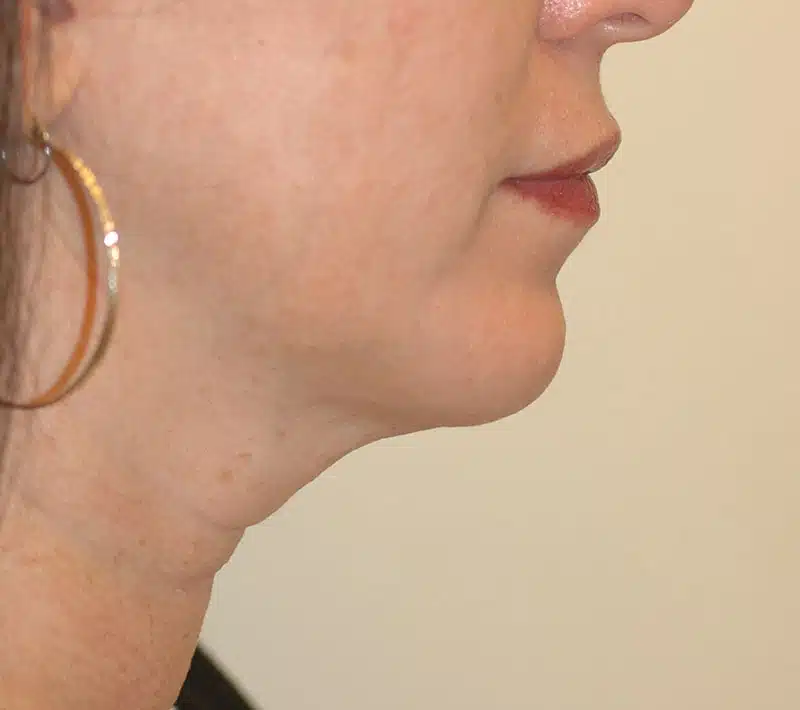


The Neck Lift Surgery Procedure
Surgical neck rejuvenation can reduce aging signs on the neck by removing excess fat, tightening muscles, and removing extra skin.
It is performed through three small incisions. The first incision is below the chin, hidden in the small crease just behind the chin. Through this incision, the fat is removed, and the platysmaplasty is performed to tighten the neck muscles.
The other two incisions, one behind each ear, are used to tighten the neck muscles laterally and remove excess skin. By tightening the platysma centrally and laterally, maximum tightening of the underlying tissues is achieved.
The incisions and stitches are all placed in hidden areas. Once healed, they will not be visible.
Ideal Candidates for Neck Lift Surgery
A neck lift can be suitable for several types of patients, including:
- Individuals in Their Early 40s: Ideal for those looking to address the early signs of aging.
- Significant Weight Loss Patients: For those who experience sagging neck skin after losing weight.
- Previous Facelift Patients: For those dissatisfied with the current appearance of their necks after a previous facelift.
Choosing the Right Neck Procedure
If you have mild to moderate neck aging, neck rejuvenation surgery effectively tightens muscles and removes excess fat. However, for more severe neck aging, a facelift might be more suitable as it offers more comprehensive rejuvenation.
For those in their 30s to mid-40s who qualify, a minimal incision neck lift can be a great option. An incision hidden behind the chin allows for the removal of deep-seated fat and tightening of cumbersome neck muscles, a result not achievable through liposuction or other non-surgical methods. The procedure lasts about two hours, and most patients can return to normal activities within 7-10 days.

Questions about your procedure?
Schedule a consultation with Dr. Andres Bustillo.
Comprehensive Neck Lift Consultation
Board-Certified Plastic Surgeon Dr. Andres Bustillo will personally meet with you to listen to your concerns about your neck. He will discuss any recent weight changes or future weight loss plans that could impact the timing of the procedure. Dr. Bustillo will then examine your neck for skin elasticity, muscle sagging, and fat buildup to develop a personalized treatment plan based on the appropriate surgical technique.
He will explain the expected results of neck rejuvenation surgery, discuss neck lift prices, and confirm your suitability by reviewing your medical history and potential health issues. Dr. Bustillo will identify the best anesthesia option for you and guide you through the recovery process, explaining when you should see noticeable results. As this is usually an outpatient procedure, you’ll return home the same day.


Neck Lift Surgery Cost
The average cost of a neck rejuvenation surgery can vary depending on the procedure’s complexity and the patient’s individual needs, typically starting at $12,000. This includes pre-operative visits, anesthesia fees, surgical fees, and post-operative care. Additional costs may be incurred if additional procedures are performed, such as liposuction or chin augmentation.
It is important to note that insurance does not typically cover cosmetic surgery procedures such as neck rejuvenation surgery. However, some medical financing options may be available for those who qualify. It is best to discuss payment options with your doctor before scheduling your procedure so you can plan accordingly.
Preparing for Your Neck Lift Surgery
Dr. Bustillo requires that all patients obtain medical clearance and pre-operative labs before undergoing neck rejuvenation surgery. Ten days before surgery, patients should refrain from taking aspirin, all anti-inflammatory products, vitamin A, and alcohol. They should begin a high dose of vitamin C (2000 mg a day) one week before and two weeks after surgery to help promote healing.
Types of Anesthesia for Neck Lift Surgery
The neck lift procedure offers flexible anesthesia options. If done alone, it can be performed using local anesthesia with oral sedation or IV anesthesia. When combined with other procedures like blepharoplasty or fat transfer, IV sedation will be used.
Dr. Bustillo performs the neck lift in his advanced, certified surgical suite. If IV anesthesia is chosen, a board-certified anesthesiologist from Baptist Hospital provides the anesthesia services, ensuring a safe and comfortable experience.
Potential Complications of Neck Lift Surgery
While neck lift surgery carries a few risks, smokers are at the highest risk due to poor blood flow, which can hinder healing. Dr. Bustillo won’t perform a neck lift on those who smoke or use nicotine patches. Patients who smoke must quit at least two weeks before the procedure.
A hematoma (a blood collection) is a rare complication, occurring in only about 1% of neck lift cases. If it happens, it can be easily drained in the office. Most patients recover well and achieve great results.
Infections are uncommon. Dr. Bustillo administers antibiotics before, during, and after surgery to minimize infection risks and ensure a smooth recovery.

Recovery Process After a Neck Lift Procedure
After your neck lift, return home or to your hotel room. Rest the first night with your head elevated on two pillows. Stick to a liquid diet for the first 12-18 hours, then gradually move to soft foods for a couple of days.
Visit the office to have the small bandage around your neck removed. Pain is typically minimal; extra-strength Tylenol or prescription medication should handle any discomfort.
The small stitches under your chin will be removed to aid the healing process.
Most neck lift patients can return to work or school, enjoying a more youthful appearance.
Return to have the stitches behind your ears removed.
Resume exercise and other strenuous activity while the final stages of healing continue over the next couple of weeks.
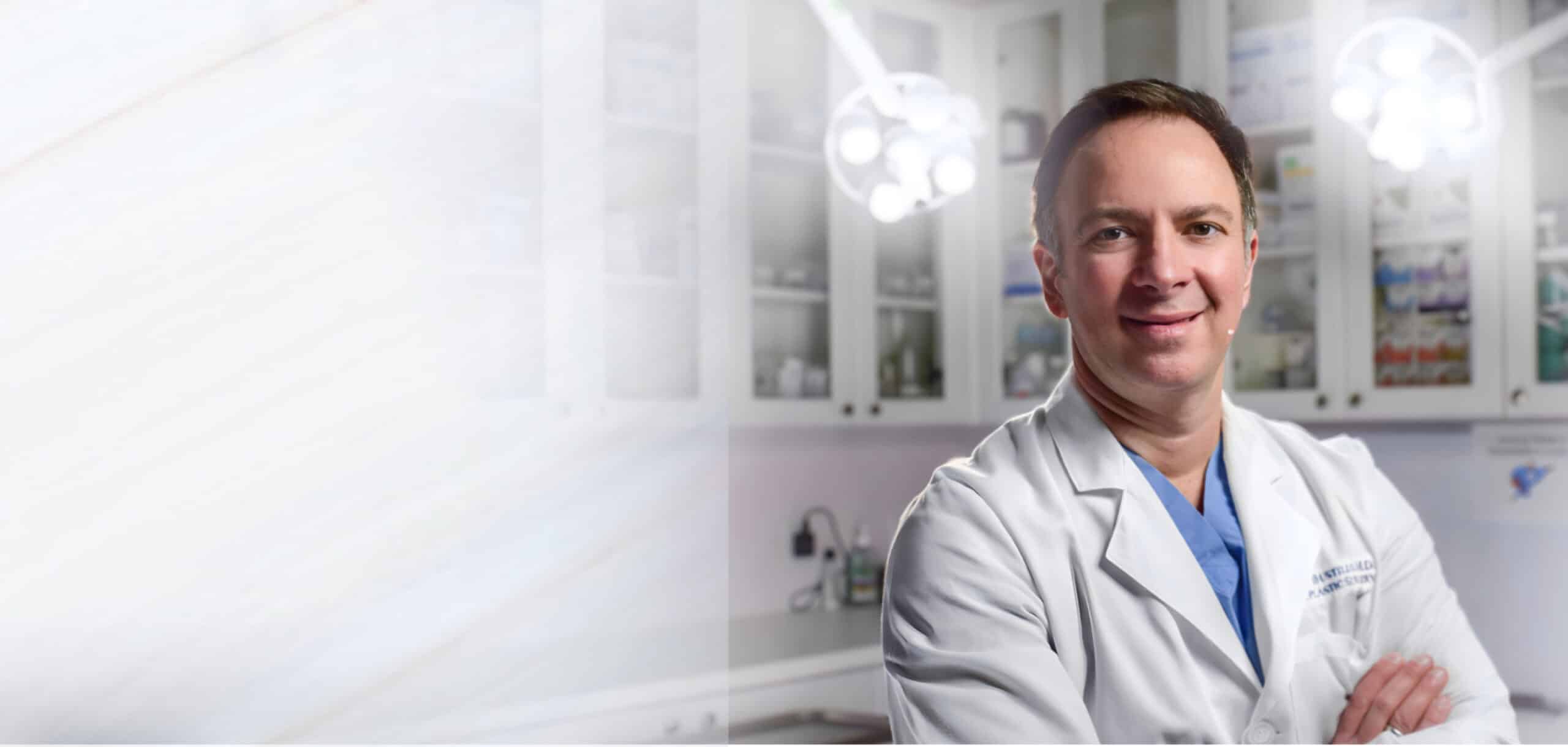
Why Choose Dr. Bustillo for Your Neck Lift?
Dr. Bustillo is known as a facial aesthetics authority in Miami. He is a double board-certified plastic surgeon with over 20 years in practice and understands how to bring out the best in his patients. He is known for offering natural-looking results from both surgical and non-invasive procedures, prompting his patients to come back again and again.
- Best Doctor’s 2020-2021
- Castle Connolly Top Doctor for more than 10 years
- Diplomate American Board of Facial Plastic and Reconstructive Surgery
- Diplomate American Board of Otolaryngology-Head and Neck Surgery
- Facial Plastic & Reconstructive Surgery Fellowship at The New York University
- Otolaryngology-Head & Neck Surgery Residency at The University of Miami, Jackson Memorial Hospital
- General Surgery Internship at The University of Miami, Jackson Memorial Hospital
Related Articles
- Nonsurgical Neck Lift Options Efficacy
- The difference between Platysmaplasty and Neck Lift
- Laser Neck Lift as a Cutting-Edge Solution for Neck Rejuvenation
- How long does neck lift last?
- How to Reverse the Aging Effects of the Neck with a Neck Lift Procedure

